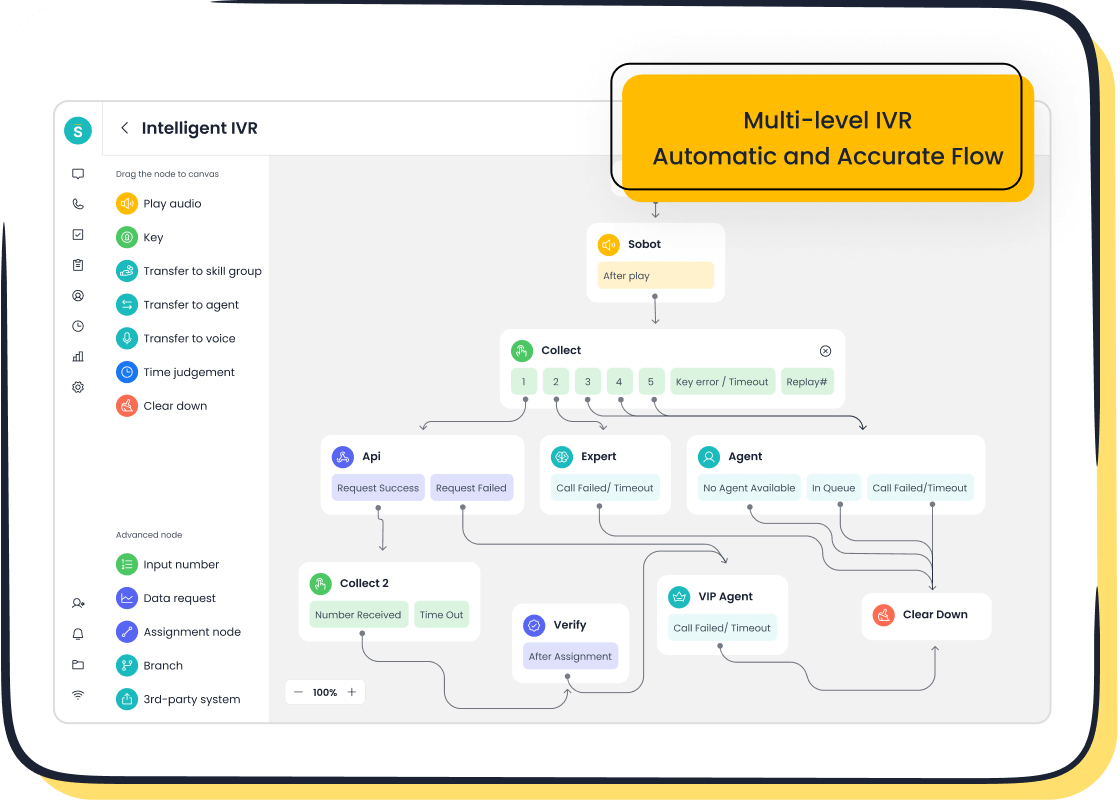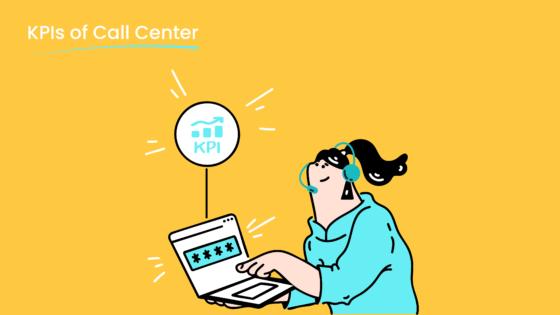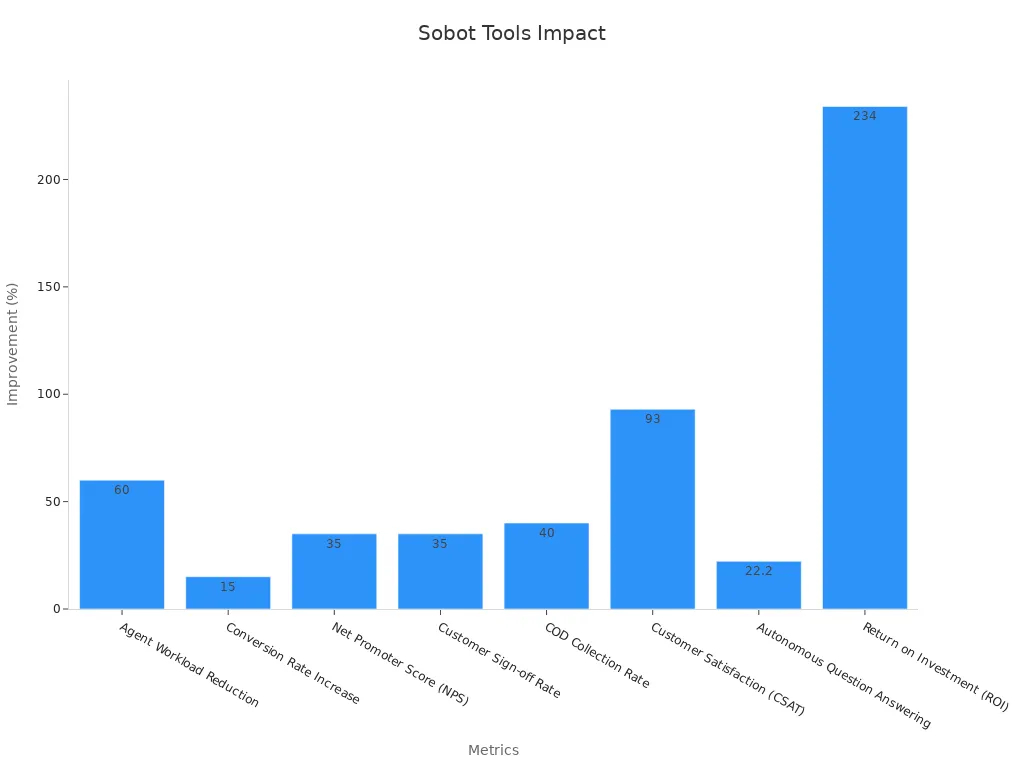Expert Advice for Omnichannel Contact Center Software

Omni channel contact center software drives measurable improvements in service quality and efficiency when guided by expert advice. Companies see higher customer satisfaction, faster first-contact resolution, and greater agent productivity through best practice tips and AI-driven tools. Sobot AI leads the omnichannel market, supporting brands like Samsung and Opay with unified service experiences. Omnichannel contact center platforms now close more tickets per agent and reduce after-call work time, reflecting the value of expert-driven solutions. Businesses that follow these strategies transform customer experience and set new standards for customer service.
Channel Optimization

Mapping the Customer Journey
Mapping the customer journey helps companies understand how customers interact with their brand across all channels. By tracking each step, businesses can identify key moments that influence satisfaction and loyalty. Metrics such as customer satisfaction (CSAT), Net Promoter Score (NPS), and Customer Effort Score (CES) reveal how well omni channel contact center software supports these interactions. For example, mapping the journey can increase customer satisfaction by 20%, boost revenue by 15%, and reduce service costs by up to 20%. Teams use these insights to focus on critical touchpoints, making every customer experience more personal and effective.
Tip: Regularly review journey maps to spot gaps in service and improve the overall omnichannel contact center experience.
Choosing the Right Channels
Selecting the right channels ensures customers can reach support in the way they prefer. Companies that offer live chat, video chat, and chatbots see higher engagement and satisfaction. For instance, 38% of customers are more likely to buy when live chat is available, and over 80% of businesses use video chat for real-time support. The right mix of communication channels leads to faster problem resolution and more personalized service. It also improves internal collaboration and reduces costs by streamlining workflows. Businesses that optimize their channels see measurable gains in both customer loyalty and operational efficiency.
Sobot Unified Workspace
Sobot’s unified workspace brings all communication channels—live chat, ticketing, and customer messages—into one platform. This centralization allows agents to manage every customer interaction without switching between systems. As a result, response times drop and organization improves. Sobot’s omni channel contact center software supports seamless channel management, making it easier for teams to deliver consistent, high-quality service. The platform’s real-time analytics help monitor key metrics like CSAT, NPS, CES, and First Contact Resolution (FCR), ensuring continuous improvement across all channels.
| Metric | Description | How It Quantifies Improvement in Response Rates and Customer Satisfaction |
|---|---|---|
| Customer Satisfaction Score (CSAT) | Measures customer satisfaction after interactions across channels. | Higher CSAT indicates improved satisfaction due to optimized channel responses. |
| Net Promoter Score (NPS) | Gauges customer loyalty and likelihood to recommend. | Increased NPS reflects better overall experience and satisfaction from channel improvements. |
| Customer Effort Score (CES) | Assesses ease of customer interaction and problem resolution. | Lower CES shows reduced effort, indicating smoother, faster responses and higher satisfaction. |
| First Contact Resolution (FCR) | Tracks percentage of issues resolved in the first interaction regardless of channel. | Higher FCR means faster resolution, fewer repeat contacts, and improved customer satisfaction. |
| Multi-Channel Experience Rating | Consolidates CSAT, NPS, CES, and FCR across all channels into a unified satisfaction measure. | Reflects consistency, resolution speed, and loyalty improvements from cross-channel optimization efforts. |
Self-Service & Automation
AI Chatbots in Omnichannel
AI chatbots have become essential in delivering seamless self-service options across all customer touchpoints. Businesses use these chatbots to answer questions, provide recommendations, and resolve issues instantly. In retail, for example, chatbots now handle complex queries and offer personalized advice, which increases customer satisfaction and reduces agent workload. User experience studies show that trust, transparency, and natural conversation style are key to successful chatbot adoption. When chatbots clarify data usage and adapt their tone, customers feel more comfortable and engaged. Sobot’s AI-powered chatbot integrates with websites, social media, and messaging apps, ensuring customers always have access to self-service options. This approach improves satisfaction scores for 74% of businesses and increases first-contact resolution by 20%. Companies also benefit from reduced average handle time, making operations more efficient.
Note: 88% of customers expect brands to offer online self-service portals, highlighting the importance of robust self-service options in omnichannel environments.
IVR and Voice/Call Center

Interactive Voice Response (IVR) systems and AI-powered voice assistants play a vital role in modern contact centers. These tools automate routine tasks, streamline call flows, and provide 24/7 self-service options for customers. With IVR, callers can resolve issues, check account details, or get information without waiting for an agent. AI voice assistants further reduce call transfers by 40% and cut resolution times from 11 minutes to just 2 minutes. Sobot’s Voice/Call Center solution offers intelligent IVR, smart call routing, and global availability, helping businesses lower operational costs and improve customer satisfaction. Accurate call routing and reduced wait times mean customers get the help they need quickly, while companies benefit from fewer misdirected calls and lower overhead.
Balancing Automation and Agents
A balanced approach between automation and human agents ensures the best customer experience. Automation technologies like conversational AI and robotic process automation handle routine inquiries, freeing agents to focus on complex or sensitive issues. Hybrid service models use AI to triage requests and provide agents with real-time guidance, enhancing both efficiency and empathy. Sobot’s unified workspace supports this balance by integrating self-service options with live agent support. Agents receive training to handle emotional or judgment-intensive interactions, while automation manages repetitive tasks. This self-service method leads to higher first-contact resolution and improved customer loyalty.
- Key benefits of balancing automation and agents:
- Faster issue resolution
- Lower operational costs
- Enhanced customer satisfaction
- Improved agent productivity
Consistency Across Platforms
Unified Brand Voice
A unified brand voice builds trust and recognition across every customer touchpoint. Customers exposed to consistent messaging on multiple channels show a 90% increase in purchase intent and a 68% improvement in brand perception. Companies that maintain a consistent experience help users feel comfortable and confident, making future interactions easier. Training customer service teams to deliver the same tone and quality across all platforms prevents confusion and strengthens brand identity. Sobot’s omnichannel solution supports this by centralizing communication tools, ensuring every message aligns with brand guidelines. Metrics such as brand recognition rates, customer engagement, and loyalty scores validate the impact of a unified brand voice in digital customer service.
Integration with CRM
CRM integration stands at the core of seamless omnichannel customer service. By consolidating data from email, chat, social media, and support tickets, companies gain a 360-degree view of each customer. This unified profile enables agents to deliver fast, personalized service and reduces duplicated efforts. Research shows that 64% of agents believe a single view of customer interactions improves job performance. Sobot’s platform offers robust CRM integration, connecting with systems like Salesforce and Shopify. This integration automates repetitive tasks, such as call routing and follow-ups, which boosts productivity and lowers call abandonment rates. For example, businesses using CRM integration have seen a 15% reduction in call-answer times and a 60%-70% drop in call abandonment, leading to a more consistent experience for every customer.
Seamless Channel Switching
Seamless channel switching allows customers to move between chat, email, and voice without repeating information. Companies like Swisscom unified their platforms, enabling customers to switch channels with full context, which led to a 16% increase in Net Promoter Score (NPS). Sobot’s omnichannel workspace ensures agents always have access to up-to-date customer data, supporting smooth transitions and reducing friction. Analytical metrics such as channel utilization rates, switching frequency, and user satisfaction scores help track the effectiveness of channel switching. When customers experience a consistent service journey, their satisfaction and loyalty rise. Sobot’s integration of AI and analytics further enhances this process, providing actionable insights for continuous improvement.
Tip: Consistency across platforms not only improves efficiency but also builds lasting trust with customers.
Analytics & Improvement
Customer Experience Metrics
Contact centers rely on clear metrics to measure customer experience and drive improvement. Companies track Customer Satisfaction Score (CSAT), Net Promoter Score (NPS), and Customer Effort Score (CES) to understand how customers feel after each interaction. These metrics help teams identify pain points and highlight areas for better service. For example, higher CSAT means customers are happier and more likely to return. Lower CES shows that customers find it easy to get help. Sobot’s omnichannel platform collects these scores across all channels, giving managers a complete view of customer satisfaction and experience.
| Metric Name | Description | Importance / Impact |
|---|---|---|
| CSAT | Measures customer happiness after each interaction | High CSAT means greater satisfaction and loyalty |
| NPS | Assesses customer loyalty and likelihood to recommend | Higher NPS links to increased loyalty and lower churn |
| CES | Evaluates how easy it is for customers to resolve their issues | Lower CES means customers are more likely to return |
| Response Time | Tracks how quickly agents reply to customers | Shorter response times improve customer experience and brand image |
| Cost Savings from CX Automation | Shows financial impact of automating customer experience processes | Up to 40% cost savings, according to McKinsey |
“You cannot be successful if you rely on one measurement to determine performance, because you risk managing to a score instead of the customer’s needs and expectations.” — Leah Leachman and Don Scheibenreif, Harvard Business Review
Real-Time Monitoring
Real-time monitoring gives contact centers the power to respond quickly to customer needs. AI-driven analytics track live calls, chat, and social media interactions. Supervisors receive instant alerts if a conversation trends negative or if a customer shows frustration. Sobot’s platform uses real-time speech analytics and sentiment analysis to help agents adjust their approach during the interaction. Managers can see key metrics like average handle time, first contact resolution, and customer satisfaction as they happen. This immediate feedback helps teams solve problems before they grow and ensures every customer receives the best possible service.
- Real-time monitoring features:
- AI analyzes tone and word choice during live calls
- Supervisors get alerts for negative sentiment or compliance issues
- Predictive analytics forecast call volume and optimize staffing
- 100% call coverage with live transcripts and playback
Continuous Refinement
Continuous improvement is essential for delivering a top-tier customer experience. Contact centers use analytics to spot trends, track agent performance, and identify areas for training. Sobot’s omnichannel solution integrates data from every channel, making it easy to see where customers struggle or where service shines. Teams review metrics like first contact resolution, transfer rate, and agent utilization to refine processes. Regular feedback from customers and agents supports ongoing changes. By acting on these insights, companies improve customer satisfaction, reduce costs, and create a seamless experience for all customers.
Empowering Teams

Omnichannel Training
Omnichannel contact centers thrive when agents receive specialized training across all platforms. Companies that invest in comprehensive onboarding and ongoing skills development see measurable improvements in First Call Resolution (FCR) rates. For example, Amazon and American Express achieve FCR rates above 75% by empowering agents with decision-making authority and regular feedback. This approach leads to higher job satisfaction, faster resolutions, and fewer escalations. Training programs often include role-playing, mentorship, and clear empowerment guidelines. Agents learn to handle multiple communication styles, which helps keep customers engaged and ensures seamless transitions between channels.
| Statistic Description | Percentage | Source/Year |
|---|---|---|
| Customers expect consistent interactions across departments | 76% | Salesforce, 2022 |
| Consumers expect companies to know their needs and expectations | 73% | Salesforce, 2020 |
| Customers frustrated by agents' lack of knowledge | 39% | Zippia, 2022 |
| Customers frustrated by repeating information | 28% | Zippia, 2022 |
| Businesses challenged by lack of interdepartmental collaboration | 39% | Statista, 2021 |
Omnichannel training reduces customer frustration and supports customer retention by ensuring agents have the knowledge and tools to deliver consistent service.
Sobot Tools for Agents
Sobot equips agents with advanced tools that drive efficiency and productivity. The unified workspace centralizes all customer interactions, allowing agents to resolve issues quickly and accurately. AI-powered workflows automate routine tasks, freeing agents to focus on complex cases. Sobot’s platform reduces agent workload by 60% and increases Net Promoter Score (NPS) by 35%. Agents resolve most issues in under one minute, and customer satisfaction rates reach 93%. These improvements translate to higher conversion rates and a 234% return on investment.

Sobot’s tools help keep customers engaged by enabling agents to deliver fast, personalized support across every channel.
Collaboration & Feedback
Strong collaboration and feedback mechanisms elevate service quality in contact centers. Organizations set clear objectives for feedback, making customer satisfaction a core value. Non-punitive environments encourage agents to share insights and learn from each other. Weekly meetings, joint problem-solving, and management support foster a culture of continuous improvement. Multiple feedback channels—such as surveys, email, and social media—ensure every voice is heard. When agents feel supported and involved, they transfer training into better job performance, which leads to higher service quality and stronger customer relationships.
Testing & Adapting
Regular System Audits
Regular system audits help contact centers maintain high standards and adapt to changing needs. Quality management combines both assurance and control, creating a cycle of continuous improvement. Audits align performance with business goals and ensure compliance with industry standards like ISO 9001:2015. Teams use advanced analytics and AI to monitor service delivery, spot errors, and identify coaching opportunities. For example, regular audits often lead to higher Customer Satisfaction (CSAT) and First Call Resolution (FCR) rates. Sobot’s analytics tools support these audits by providing real-time data and comprehensive reports, making it easier to find gaps and optimize agent training. Automation tools also increase audit frequency, helping teams respond quickly to new challenges.
Customer Feedback Loops
Customer feedback loops play a key role in improving service quality. Contact centers collect feedback through surveys, follow-up emails, and direct conversations. Metrics like CSAT, Net Promoter Score (NPS), and Customer Effort Score (CES) show how well the center meets customer needs. When teams act on feedback, they see higher satisfaction and loyalty. For instance, Adobe increased customer retention by 30% and Customer Lifetime Value by 20% by focusing on NPS and feedback-driven changes. Sobot’s omnichannel platform makes it easy to gather and analyze feedback from every channel, ensuring that customer voices drive meaningful improvements. Closing the loop by communicating changes builds trust and encourages more engagement.
Adapting to Trends
Adapting to new trends keeps contact centers competitive and responsive. Teams monitor changes in customer preferences and channel usage, then adjust strategies as needed. The adoption of AI, automation, and cloud-based platforms streamlines processes and improves the customer experience. Regular training ensures agents stay up to date with new tools and best practices. Sobot’s platform supports this adaptability with real-time analytics and easy integration of new communication channels. By tracking metrics like Average Handle Time and FCR, managers can spot trends and make data-driven decisions. Staying flexible and innovative helps contact centers deliver consistent, high-quality service as customer expectations evolve.
Tip: Use Sobot’s analytics and reporting features to support ongoing testing, gather feedback, and adapt quickly to new technologies.
Omni channel contact center software transforms customer service when guided by expert advice. Studies show that companies using expert strategies see higher customer retention, lower churn, and better engagement. AI-powered tools in omni channel contact center software help teams predict customer needs and personalize service. Sobot’s omni channel contact center software unifies data, automates tasks, and supports agents with real-time insights. Brands like Opay improved satisfaction and cut costs by using Sobot’s solutions. Companies ready to boost efficiency and customer loyalty should explore Sobot’s omni channel contact center software. For more resources, visit Sobot’s official website.
FAQ
What is omni channel contact center software?
Omni channel contact center software connects all customer communication channels—like phone, chat, email, and social media—into one platform. This software helps agents deliver fast, consistent service. Sobot’s solution supports over 10,000 brands worldwide with unified customer experiences.
How does Sobot’s omni channel contact center software improve efficiency?
Sobot’s omni channel contact center software automates routine tasks, unifies customer data, and provides real-time analytics. Companies using Sobot report a 30% productivity boost and a 20% reduction in service costs. Agents resolve most issues in under one minute.
Why is channel consistency important in omni channel contact center software?
Channel consistency ensures customers receive the same quality of service on every platform. Studies show that consistent messaging increases purchase intent by 90%. Sobot’s unified workspace keeps all interactions aligned, improving customer satisfaction and loyalty.
Can omni channel contact center software integrate with CRM systems?
Yes. Sobot’s omni channel contact center software integrates with popular CRM systems like Salesforce and Shopify. This integration gives agents a 360-degree view of each customer, leading to faster resolutions and higher satisfaction scores.
How does omni channel contact center software support self-service?
Omni channel contact center software, such as Sobot’s, uses AI chatbots and IVR to provide 24/7 self-service. Over 60% of customers resolve issues without agent help. This approach reduces wait times and increases customer satisfaction.
Tip: For more details about Sobot’s omni channel contact center software, visit Sobot’s official website.
See Also
Comprehensive Overview Of Omnichannel Call Center Platforms
Step-By-Step Process For Deploying Omnichannel Contact Centers
Best Contact Center Technologies Evaluated For The Year 2024
Analyzing Artificial Intelligence Solutions For Enterprise Call Centers
